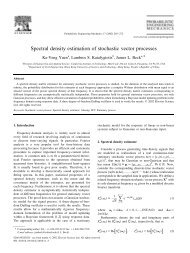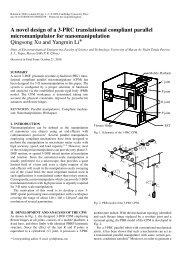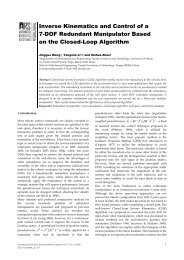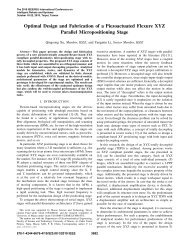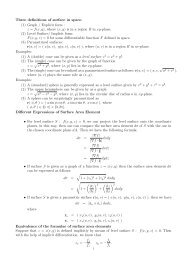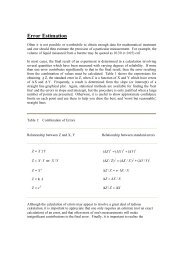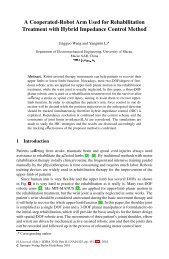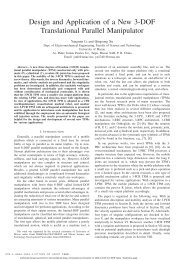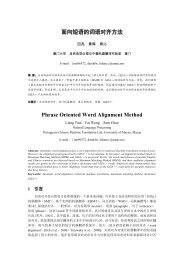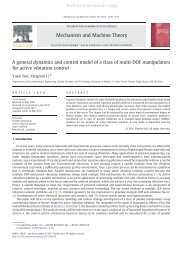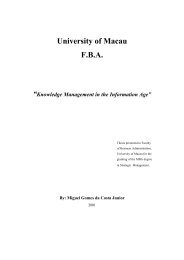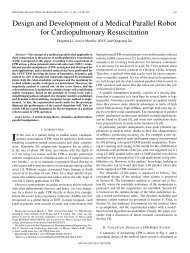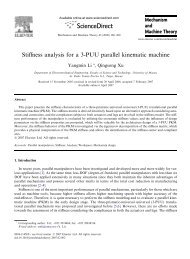lecture notes 13
lecture notes 13
lecture notes 13
You also want an ePaper? Increase the reach of your titles
YUMPU automatically turns print PDFs into web optimized ePapers that Google loves.
.Example. Let S be the surface (with outer unit normal vector n) of theregion D bounded by the planes z = 0, y = 0, y = 2 and the paraboliccylinder ∫∫ z = 1 − x 2 . Apply the divergence theorem to computeF · n dS, where F(x, y, z) = (x + cos y)i + (y + sin z)j + (z + e x )k.. SSolution. For any point (x, y, z) in D, we have 0 ≤ z ≤ 1 − x 2 , hence1 − x 2 ≥ 0, so x 2 ≤ 1, i.e. −1 ≤ x ≤ 1, hence we haveD = { (x, y, z) | − 1 ≤ x ≤ 1, 0 ≤ y ≤ 2, 0 ≤ z ≤ 1 − x 2 }.∇ · F(x, y, z) = (x + cos y) x + (y + sin z) y + (z + e x ) z = 1 + 1 + 1 = 3.Instead of evaluating the ∫∫ surface integral ∫∫∫ directly, we can∫∫∫apply thedivergence theorem that F · n dS = ∇ · F dV = 3 dV =SDD∫ 1 ∫ 2 ∫ 1−x 2∫ <strong>13</strong>dz dy dx = 3 × 2 (1 − x 2 ) dx = 6(2 − 2 3 ) = 8.−100−1Remark. Though we had not determined the outer normal vector fieldn, but it is necessary to know that n is pointing outward on theboundary S of the solid region D, before we apply divergencetheorem.. . . . . .



